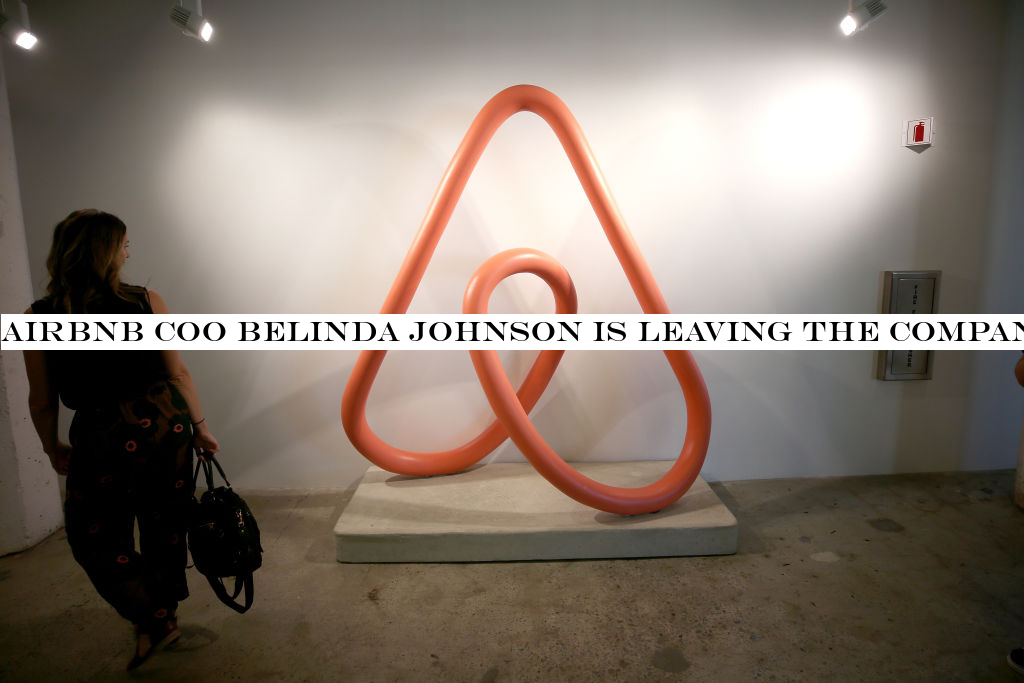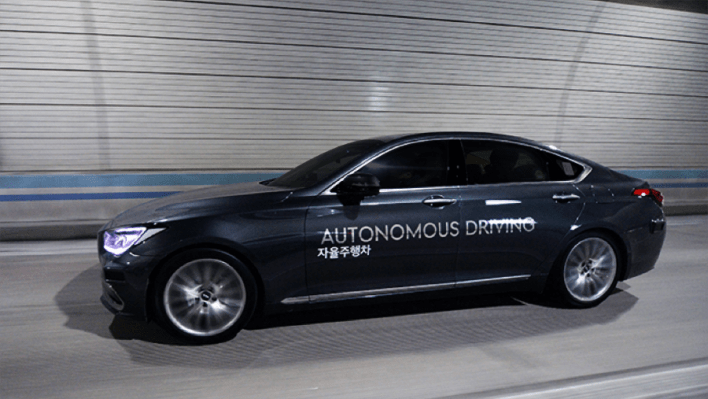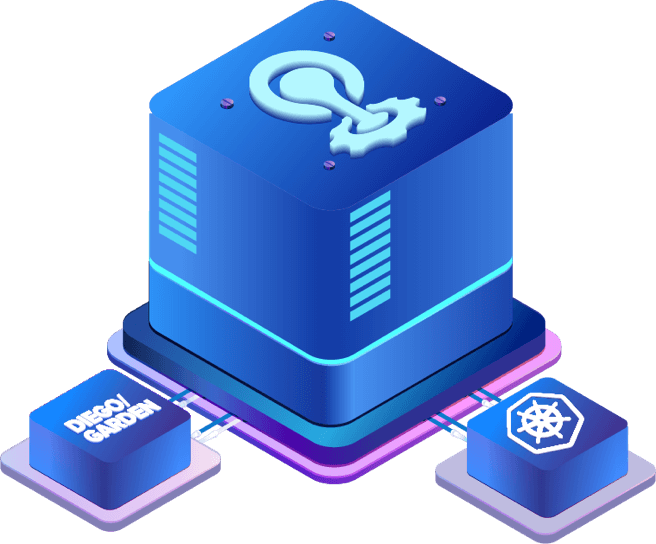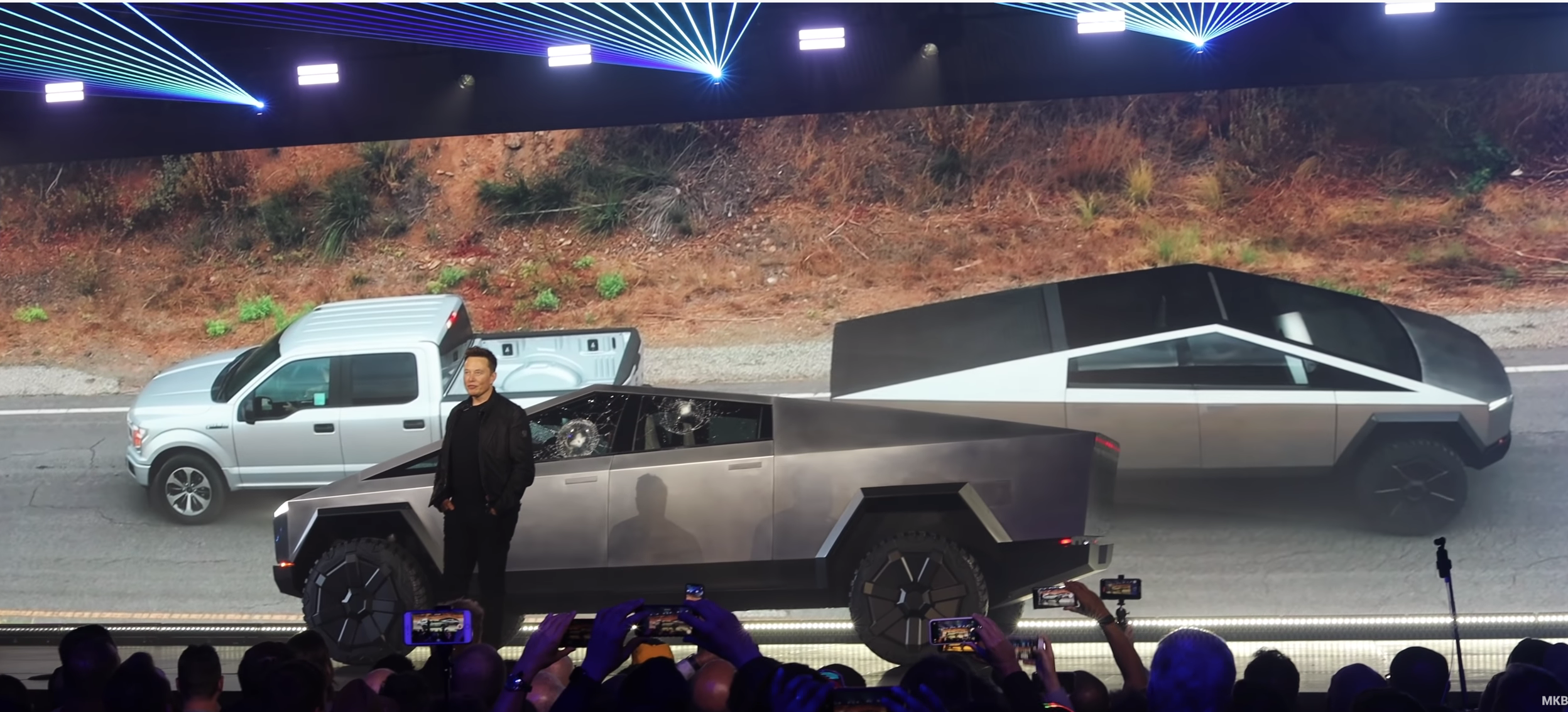Technology
E-commerce now accounts for 14% of all retail sales, and its growth has led to a rise in the fortunes of startups that build tools to enable businesses to sell online. In the latest development, a company called VTEX — which originally got its start in Latin America helping companies like Walmart expand their business to new markets with an end-to-end e-commerce service covering things like order and inventory management, front-end customer experience and customer service — has raised $140 million in funding, money it will be using to continue taking its business deeper into more international markets.
The investment is being led by SoftBank, specifically via its Latin American fund, with participation also from Gávea Investimentos and Constellation Asset Management. Previous investors include Riverwood and Naspers; Riverwood continues to be a backer, the company said.
Mariano Gomide, the CEO who co-founded VTEX with Geraldo Thomaz, said the valuation is not being disclosed, but he confirmed that the founders and founding team continue to hold more than 50% of the company. In addition to Walmart, VTEX customers include Levi&s, Sony, L&Oréal and Motorola . Annually, it processes some $2.4 billion in gross merchandise value across some 2,500 stores, growing 43% per year in the last five years.
VTEX is in that category of tech businesses that has been around for some time — it was founded in 1999 — but has largely been able to operate and grow off its own balance sheet. Before now, it had raised less than $13 million, according to PitchBook data.
This is one of the big rounds to come out of the relatively new SoftBank Innovation Fund, an effort dedicated to investing in tech companies focused on Latin America. The fund was announced earlier this year at $2 billion and has since expanded to $5 billion. Other Latin American companies that SoftBank has backed include online delivery business Rappi, lending platform Creditas and property tech startup QuintoAndar.
The common theme among many SoftBank investments is a focus on e-commerce in its many forms (whether thattransactions for loans or to get a pizza delivered), and VTEX is positioned as a platform player that enables a lot of that to happen in the wider marketplace, providing not just the tools to build a front end, but to manage the inventory, ordering and customer relations at the back end.
&VTEX has three attributes that we believe will fuel the companysuccess: a strong team culture, a best-in-class product and entrepreneurs with profitability mindset,& said Paulo Passoni, managing investment partner at SoftBankLatin America fund, in a statement. &Brands and retailers want reliability and the ability to test their own innovations. VTEX offers both, filling a gap in the market. With VTEX, companies get access to a proven, cloud-native platform with the flexibility to test add-ons in the same data layer.&
Although VTEX has been expanding into markets like the U.S. (where it acquired UniteU earlier this year), the company still makes some 80% of its revenues annually in Latin America, Gomide said in an interview.
There, it has been a key partner to retailers and brands interested in expanding into the region, providing integrations to localise storefronts, a platform to help brands manage customer and marketplace relations, and analytics, competing against the likes of SAP, Oracle, Adobe and Salesforce (but not, he said in answer to my question, Commercetools, which builds Shopify -style API tools for mid and large-sized enterprises and itself raised $145 million last month).
E-commerce, as we&ve pointed out, is a business of economies of scale. Case in point: While VTEX processes some $2.5 billion in transactions annually, it makes a relatively small return on that — $69 million, to be exact. This, plus the benefit of analytics on a wider set of big data (another economy of scale play), are two of the big reasons VTEX is now doubling down on growth in newer markets like Europe and North America. The company now has 122 integrations with localised payment methods.
&At the end of the day, e-commerce software is a combination of knowledge. If you don&t have access to thousands of global cases you can&t imbue the software with knowledge,& Gomide said. &Companies that have been focused on one specific region are now realising that trade is a global thing. China has proven that, so a lot of companies are now coming to us because their existing providers of e-commerce tools can&t ‘do international.& & There are very few companies that can serve that global approach and that is why we are betting on being a global commerce platform, not just one focused on Latin America.&
- Details
- Category: Technology
Read more: VTEX, an e-commerce platform used by Walmart, raises $140M led by SoftBank’s LatAm fund
Write comment (94 Comments)
Airbnb COO Belinda Johnson notified employees of her impending departure next March, CNBC first reported. Airbnb has since confirmed the news, saying Johnson will remain involved with the company on its board of directors. Her last day as COO will be March 1, 2020.
News of Johnson stepping down comes as Airbnb gears up to make its initial public offering next year. In September, the company announced it hit more than $1 billion in revenue in Q2 2019. Airbnb says it has also been EBITDA profitable for the last two years.
However, Airbnb is no stranger to controversy. From regulatory issues stemming from Airbnbimpact on housing prices, to discrimination, Airbnb has some buttoning up to do before it goes public.
Johnsondecision to leave came down to work-life balance, she said in a note posted on the Airbnb newsroom.
&Being elevated to the Board of Directors and contributing to the long term success of Airbnb while taking more time to be with my amazing family is an incredible opportunity,& Johnson said.
Johnson, who joined Airbnb back in 2011, was the first executive Airbnb co-founder and CEO Brian Chesky ever hired.
&Though we intend for her to serve on our board for a long time to come, I have told Belinda that she can return to Airbnb as an executive if she ever wishes to do so,& Chesky wrote.
- Details
- Category: Technology
Read more: Airbnb COO Belinda Johnson is leaving the company next year
Write comment (97 Comments)
Elon Musk revealed the Cybertruck last night, saying it looks like nothing else on the market. Thattrue, but the Cybertruck shares several key features with an unlikely pickup — the first-generation Honda Ridgeline.
Both the Cybertruck and Honda Ridgeline are built differently from standard pickups. They employ a unibody design, much like whatused in most passenger vehicles. Instead of a body sitting on a frame, the Cybertruck and Ridgeline are built around what is essentially a metal cage. A unibody truck makes sense for Tesla, which doesn&t want a large, bulky frame under the body. Tesla wants batteries under the vehicle and uses the body to protect them.
Because of the unibody pickup design, the vehicle has to employ a key design element to enable high-capacity towing: a sail pillar.
Most often, a vehicletowing capacity is limited by body design rather than engine strength. Towing places a lot of stress on the vehicleframe. Want to pull more? Make a beefier frame under the truck. But with the unibody Tesla Cybertruck, to increase the towing capacity, it had to use as big of a sail pillar as possible, explaining the unconventional design.
A vehicle naturally wants to twist. Think of wringing out a washcloth. In a body-on-frame design, the engine rests on a large frame, which absorbs a lot of the stresses. In a unibody design, vertical supports help, and are employed throughout, starting with an A pillar by the windshield and ending with a D pillar in the rear window of SUVs.
With a body-on-frame design, like whatused in most pickups, the force from a trailer rests on the frame. Most of the energy is absorbed in the structure located under the body of the truck. The truckcab is decoupled from the bed, allowing the cab and bed to move relative to one another and better compensate for the stress on the frame.
In a unibody design, like in the Cybertruck, Ridgeline or most SUVs, the body is subjected to the same forces, but has to use the body to prevent twisting. The buttress-like sail pillar helps absorb the energy and prevent the truck from twisting.
Unibody SUVs have D pillars — the vertical supports at the rear of the vehicle — where pickups do not. This D pillar is needed to prevent the unibody from twisting and flexing when under load. But without the D pillar in a unibody pickup, a sail pillar connects the C pillar to the rear of the truck, achieving a similar result.
The first-generation Honda Ridgeline had a modest sail pillar, but Honda was able to ditch the feature for the second generation by reinforcing critical points throughout the unibody.
Honda described the redesign like this:
The rear frame structure of the 2017 Ridgeline is vitally important to the overall structural rigidity of the body, to collision safety performance and to the Ridgelinehauling and towing capability. Utilizing fully boxed frame members for the body sides and rear tailgate frame, the truss-style rear inner construction contributes to the new Ridgelinemore conventional three-box design profile—allowing for the elimination of the buttress-style body structure in the forward portion of the upper bed on the previous model—while contributing to a 28-percent gain in torsional rigidity versus the previous model. Also, the U-shaped rear frame member serves as a highly rigid mounting structure for the rear tailgate, allowing for a highly precise tailgate fit.
The Chevrolet Avalanche also used a sail pillar to compensate for the lack of a D pillar. To make the Avalanche, Chevy took a full-size Suburban SUV and cut off the rear quarter.
Itunclear if Tesla unveiled the final version of the Cybertruck. We still have significant questions. And if itnot the final design, therea chance Tesla will be able to use some of Hondatricks to reduce the flying buttresses and produce a more conventional pickup design.
- Details
- Category: Technology
Read more: Here’s why the Tesla Cybertruck has its crazy look
Write comment (97 Comments)
Hyundai has signed a memorandum of understanding (MOU) with the city of Seoul to begin testing six autonomous vehicles on roads in the Gangnam district beginning next month, BusinessKorea reports. The arrangement specifies that six vehicles will begin testing on 23 roads in December. Looking ahead to 2021, there will be as many as 15 of the cars, which are hydrogen fuel cell electric vehicles, testing on the roads.
Seoul will provide smart infrastructure to communicate with the vehicles, including connected traffic signals, and will also relay traffic and other info as frequently as every 0.1 seconds to the Hyundai vehicles. That kind of real-time information flow should help considerably with providing the visibility necessary to optimize safe operation of the autonomous test cars. On the Hyundai said, they&ll be sharing information too — providing data around the self-driving test that will be freely available to schools and other organizations looking to test their own self-driving technology within the city.
Together, Seoul and Hyundai hope to use the partnership to build out a world-leading downtown self-driving technology deployment, and to have that evolve into a commercial service, complete with dedicated autonomous vehicle manufacture by 2024.
- Details
- Category: Technology
Read more: Hyundai and Seoul set to test self-driving cars on city roads starting next month
Write comment (95 Comments)Cloud Foundry, the open-source platform-as-a-service that, with the help of lots of commercial backers, is currently in use by the majority of Fortune 500 companies, launched well before containers, and especially the Kubernetes orchestrator, were a thing. Instead, the project built its own container service, but the rise of Kubernetes obviously created a lot of interest in using it for managing Cloud Foundrycontainer implementation. To do so, the organization launched Project Eirini last year; today, itofficially launching version 1.0, which means itready for production usage.
Eirini/Kubernetes doesn&t replace the old architecture. Instead, for the foreseeable future, they will operate side-by-side, with the operators deciding on which one to use.
The team working on this project shipped a first technical preview earlier this year and a number of commercial vendors, too, started to build their own commercial products around it and shipped it as a beta product.
 &Itone of the things where I think Cloud Foundry sometimes comes at things from a different angle,& IBMJulz Friedman told me. &Because itnot about having a piece of technology that other people can build on in order to build a platform. We&re shipping the end thing that people use. So 1.0 for us — we have to have a thing that ticks all those boxes.&
&Itone of the things where I think Cloud Foundry sometimes comes at things from a different angle,& IBMJulz Friedman told me. &Because itnot about having a piece of technology that other people can build on in order to build a platform. We&re shipping the end thing that people use. So 1.0 for us — we have to have a thing that ticks all those boxes.&
He also noted that Diego, Cloud Foundryexisting container management system, had been battle-tested over the years and had always been designed to be scalable to run massive multi-tenant clusters.
&If you look at people doing similar things with Kubernetes at the moment,& said Friedman, &they tend to run lots of Kubernetes clusters to scale to that kind of level. And Kubernetes, although itgoing to get there, right now, there are challenges around multi-tenancy, and super big multi-tenant scale&
But even without being able to get to this massive scale, Friedman argues that you can already get a lot of value even out of a small Kubernetes cluster. Most companies don&t need to run enormous clusters, after all, and they still get the value of Cloud Foundry with the power of Kubernetes underneath it (all without having to write YAML files for their applications).
As Cloud Foundry CTO Chip Childers also noted, once the transition to Eirini gets to the point where the Cloud Foundry community can start applying less effort to its old container engine, those resources can go back to fulfilling the projectoverall mission, which is about providing the best possible developer experience for enterprise developers.
&We&re in this phase in the industry where Kubernetes is the new infrastructure and [Cloud Foundry] has a very battle-tested developer experience around it,& said Childers. &But therealso really interesting ideas that are out there that are coming from our community, so one of the things that I&ve suggested to the community writ large is, letuse this time as an opportunity to not just evolve what we have, but also make sure that we&re paying attention to new workflows, new models, and figure out whatgoing to provide benefit to that enterprise developer that we&re so focused on — and bring those types of capabilities in.&
Those new capabilities may be around technologies like functions and serverless, for example, though Friedman at least is more focused on Eirini 1.1 for the time being, which will include closing the gaps with whatcurrently available in Cloud Foundryold scheduler, like Docker image support and support for the Cloud Foundry v3 API.
- Details
- Category: Technology
Read more: Cloud Foundry’s Kubernetes bet with Project Eirini hits 1.0
Write comment (94 Comments)Tesla just unveiled its first pickup truck, and the Cybertruck gets a lot of things right. The look is polarizing, but from a truck perspective, itcapable, practical and relatively affordable compared to other pickups. Of course, all those qualifiers come with an asterisk. Tesla didn&t say when it will hit the market and past Tesla vehicles have been hit with delays and missing features.
Now that the dust has settled, some questions stick out. Is the design final or how will Tesla have to change it to meet regulations? Tesla says the Cybertruck has a maximum range of 500 miles, but how will that change once a trailer is behind it? And whatthe size? It looks significantly longer than a full-size Ford F-150. Why does it have super glass and who does Tesla expect to buy it?
How does the design need to change to meet safety regulations?
There are many safety regulations throughout the world. Each market has slightly different variations. Does the current design meet these regulations? What changes are expected to meet these regulations?
The tires look to stick out from the wheel-wells, and thatnot allowed. The vehicle seems to lack a pedestrian-friendly front bumper. Where are the windshield wipers and turn signals and side mirrors?
How does load affect the range?
Weight kills range — in electric and gas vehicles. In my F-150 Ecoboost, when towing a large camper, my mpg drops from 19 mpg to 10 mpg. Where I can generally get around 700 miles on a tank, when towing a camper, I get about 400 miles.
Tesla seems to be addressing this in a few ways. One, adding another motor should increase the efficiency and help increase range, and the Cybertruck will be offered with two and three motors. Two, an air suspension is better suited to handle the added weight on the rear axle, allowing the vehicle to distribute the weight better.

What are the vehicle dimensions?
The Cybertruck looks massive and revealed questionable specs. During the presentation, itshowed next to several other vehicles, including a Ford F-150 SuperCrew with a five-and-a-half-foot bed. The Cybertruck looks significantly longer and wider.
I drive a Ford F-150 SuperCrew with a six-and-a-half-foot bed. Itlonger than a standard parking spot. Itvery long and hard to park, even in suburban parking spots. I worry the Cybertruck will be even harder to park — though the tough exterior will help door dings.
If the Cybertruck is longer and wider than a standard pickup truck, it will need additional lights to drive on U.S. roads. The U.S. government mandates any vehicle wider than 80 inches must have five orange safety lights to illustrate the width. The Cybertruck showed during the presentation lacked these lights.
Why super glass?
The Cybertruck is a unibody design, something Elon talked up extensively throughout the introduction. A unibody vehicle distributes stress throughout the body instead of a decoupled frame. But unibody trucks are not new, and there are several on the market, including the Honda Ridgeline. None have bulletproof glass.
With more stress hitting the body, durable glass is wanted to help handle the pressure.
But why extra-strong glass? Adding extra-durable glass seems like a waste of weight, and Tesla didn&t explain the justification outside of saying itcool.
Whatthe target market?
Who does Tesla expect to buy the Cybertruck?
For construction companies, the massive (and necessary) sail pillar is polarizing and impractical, as it limits the utility of the bed. Plus, Tesla doesn&t like owners wrenching on their vehicles, which could hamper on-the-spot repairs construction companies generally employ.
For those hauling trailers, the Cybertruckrange is dramatically less than whatpossible with gasoline and diesel engines and will be even less once under load.
For the weekend DIY, the Cybertruck appears to be extremely long, limiting its appeal as a daily driver when it needs to navigate parking lots and city streets.
Eventually, Tesla will answer the questions above as the Cybertruck nears release.
- Details
- Category: Technology
Read more: We have five questions about Tesla’s Cybertruck
Write comment (100 Comments)Page 283 of 5614

 8
8